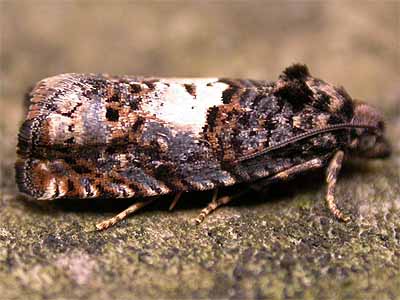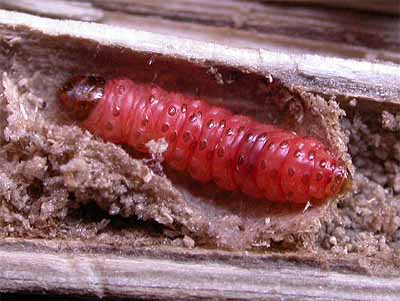

| Thistle larvae could provide new information |
| Those who visited the
insect news pages in 2004, will probably have read about
the discovery of several larvae, which sparked interest
amongst some of the UK's entomologists. Found within the stems of Creeping Thistle (Cirsium arvense) in early 2004, the larvae were initially identified as an Epiblema sp - either E. cirsiana or E. scutulana. Neither of these moths are currently known to feed on Creeping Thistle and the information is potentially new to science. The latter species was found and identified here in 2003, so E.cirisana would represent a new species of micro moth for the Eakring/Kersall area. |
 |
|
| ............... | ||
| Entomologists
throughout the UK were encouraged to look for larvae of
both species on Spear Thistle and Knapweed (Centaurea
nigra) during the Winter months on the basis of this
discovery. I also conducted further extensive searches at other sites throughout the Eakring and Kersall area. Like other entomologists across the UK seem to have had, there was no more success until I recently came across another single larva, at a site approximately 300 metres from the original patch of Creeping Thistles. Up until this find, the site where larvae had originally been found, remained the only one to date. Detailed study of older stems which remained in-situ at both sites from 2002, revealed that both Creeping Thistle patches, had in fact been used before. |
||
| ............... | ||
| All larvae collected were
brought home and reared indoors. They began pupating
after about two weeks and the first has now hatched
(11/03/04). It seems that the original identification is indeed correct, but requires specimens to be sent away for dissection, to determine exactly which species it is. Epiblema cirsiana and scutulana were only recently seperated. The other possible (though always unlikely) identification, that the larvae could have been Aethes cnicana, can now be ruled out completely. Although the larvae did'nt match that species' given description, A.cnicana could'nt be eliminated from the equation at the time they were discovered. Now that the first adult has emerged, A.cnicana has been ruled out. |
 |
|